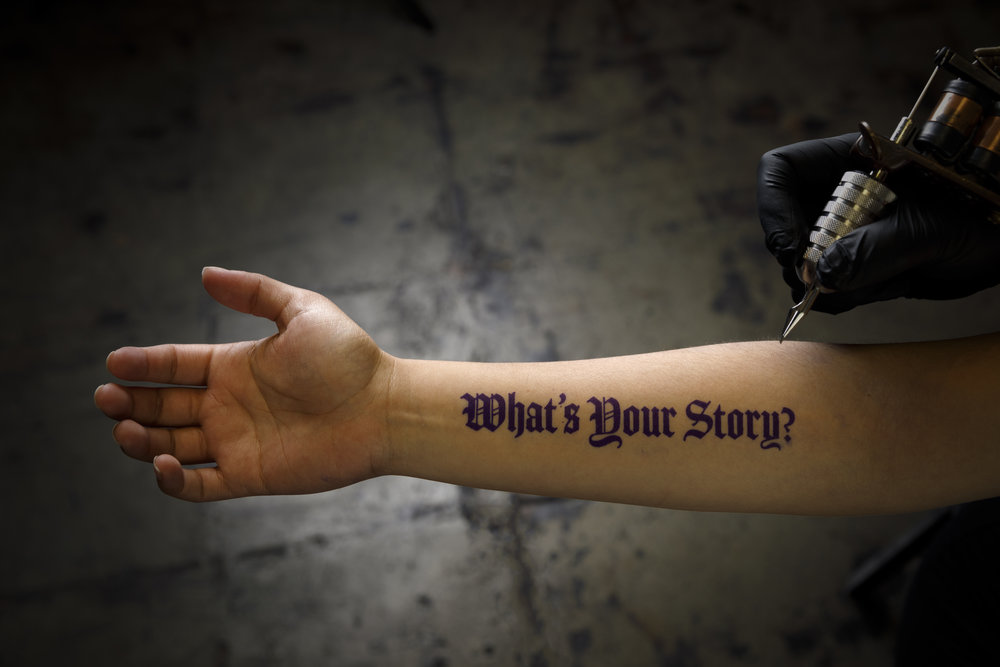
Tattoos have always been associated with outsider culture. The INK: Stories on Skin, which unites local histories and creates a historical narrative of tattoo culture from Long Beach, the Pike Amusement Park district, the US Navy, LA Chicano culture and tattoo art, shows us that it’s a little more nuanced than that. INK is now being exhibited at the MOLAA in Long Beach and runs from August 25, 2018 – February. 3, 2019.
To tattoo artist Christopher Brand, part of the UGLAR collective that participated in this exhibition, tattoos are not just about outsider culture, but political awareness. Born in Boston, Massachusetts, but raised in Los Angeles most of his life. His work is strongly rooted in the Chicano culture of L.A. His work 108 Heroes of Los Angeles is part of INK. Brand synthesizes Japanese culture from the 14th century and Chicano culture from the 80’s. His mission was to show oppressive government structures as a universal myth, an ongoing battle between oppressed groups and oppressors. “I choose this as a work to display because it hit home the most,” says Brand. “The Pachuco Riots, Chavez Ravine, if you know your United States history, our government is not the most helpful to non-white culture — and in all reality, they hated on Irish and the Italians as well.” To Brand, it’s up to the people to come together and fight against that type of exclusion.
Brand based this particular tattoo series on the Chinese novel Shuihu Zhuan (Water Margin, also known as Suikoden in Japanese), in the timeline and context of 1980’s Los Angeles. The novel is about a group of outlaws fighting a corrupt government. “This particular story has a history and a legacy of being retold throughout history because it’s timeless. It’s been happening since before the novel was written and is currently happening now,” says Brand. He uses both the oppressed Chicano culture (now Latinx) and the Japanese culture to show how those in positions of power use their power to disempower minority or outsider groups.
“It was a group effort,” says Brand about the exhibition as a whole. “Each of the designs was created as tattoo art or was created for the exhibition itself.” INK is the history from 20’s, 30’s and on till now. There were a total of 40 tattoo artist involved with hand painting the exhibit. Brand was also involved in re-creating legendary works by famed Long Beach traditionalist tattoo artists Bert Grimm, Mike Brown (who worked at Sailor Jerry’s shop) and Colonel Todd, a navy man turned tattoo artist. Bert Grimm was the central figure for the tattoo community at the now demolished amusement park, The Pike, in Long Beach, California, during the ‘50s and ‘60s. And Mike Brown tattooed at Good Time Charlie’s Tattooland in East L.A.
The legendary tattoo parlor Good Time Charlie’s Tattooland is an iconic part of Chicano tattoo history. Jack Rudy and Charlie Cartwright — who actually met at the Pike — pioneered single-needle style Los Angeles is known for today: symbols of Mexican revolutionaries, Aztec and Mayan figures, and using the old English font — that’s all from East L.A. It’s important to note that many of these tattoo artists were former military men which show tattoos are not just about outsider culture but a crucial story about the working class.
Brand himself worked at Good Time Charlie’s Tattooland which not only allowed him to develop as a tattoo artist but also travel the world. It also influenced his work. “It has a rich tradition rooted in Los Angeles and rooted in Chicano culture because that’s who was getting tattoos at the time there. The more I learned about Chicano culture and the deeper I got into Japanese culture the more I found the two to be similar. It begins by celebrating the people around it, their histories, and their stories.”
I like to stare at my computer. Occasionally I type words to pass the time. Those words are usually about music.

